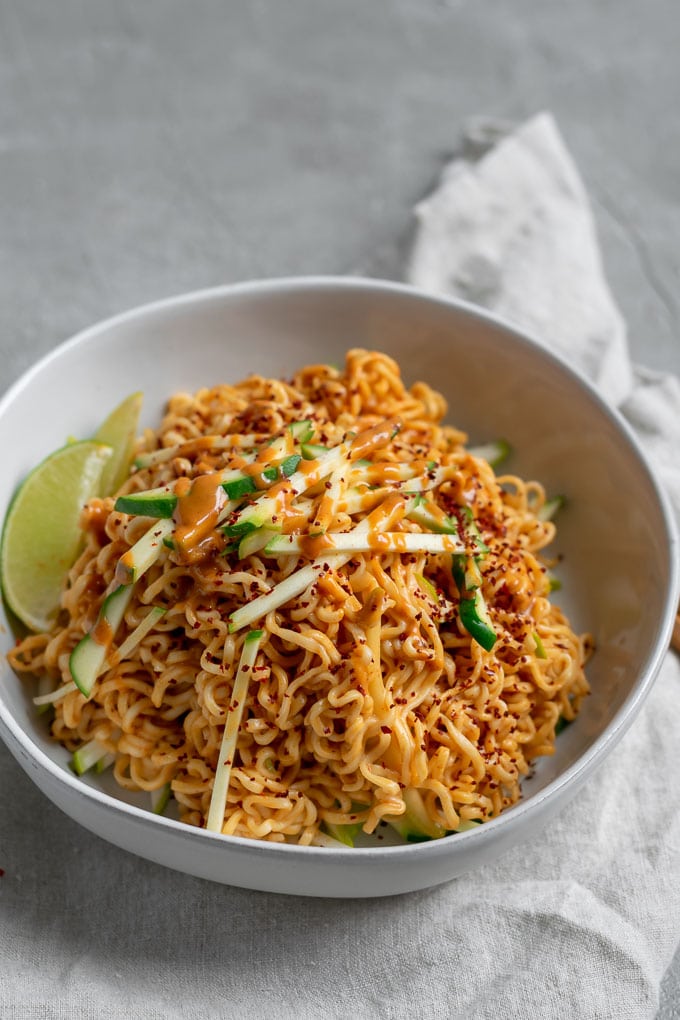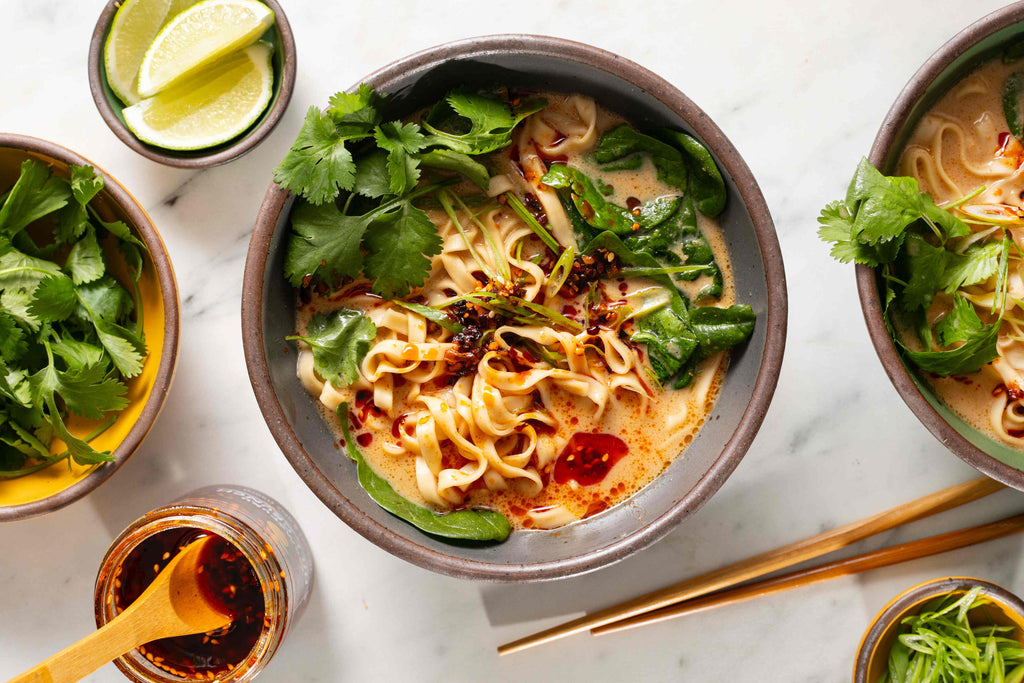Hey there! If youre scrolling for a quick dinner that feels both adventurous and comforting, youve landed in the right spot. In the next few minutes Ill walk you through a gochujang peanut butter pasta thats ready in about 20 minutes, packs a punch of flavor, and doesnt require a pantry raid. No fluff, just the good stuff you need to get dinner on the table and a smile on your face.
Essential Ingredients & Tools
What you really need
The magic of this dish lies in a handful of pantry staples. Grab the following, and youre set:
- 2tablespoons gochujang paste the Korean fermented chili paste that brings deep umami heat.
- 3tablespoons smooth peanut butter for that creamy, nutty backbone.
- 1tablespoon soy sauce or tamari adds salty depth.
- 1teaspoon rice vinegar brightens the sauce with a gentle tang.
- teaspoon sesame oil a nutty finish.
- 1 clove garlic, minced.
- Optional: 1teaspoon honey or maple syrup if you like a touch of sweetness.
Pick the right pasta
While any long noodle works, I love using spaghetti or linguine for that classic twirl. If youre craving a more Asian vibe, try rice noodles, which pair beautifully with the gochujang peanut sauce. Even rice noodles are an option for a glutenfree spin.
Tools that make life easier
- Large pot for boiling pasta.
- Medium skillet or saucepan for the sauce.
- Whisk (or fork) to emulsify the sauce without lumps.
- Measuring spoons accuracy helps balance the heat and creaminess.
StepbyStep Cooking
1. Cook the pasta aldente
Bring a big pot of salted water to a rolling boil. Add your pasta and cook according to the package directions usually 810 minutes for spaghetti. I always taste a strand a minute before the timer ends; it should be firm but not crunchy. Reserve about cup of the starchy cooking water, then drain.
2. Build the gochujang peanut butter sauce
While the pasta is cooking, heat a medium skillet over lowmedium heat. Add a splash of sesame oil and the minced garlic, stirring for 30 seconds until fragrant (watch out garlic can burn fast!).
Next, whisk in the gochujang, peanut butter, soy sauce, rice vinegar, and honey if youre using it. The sauce will look thick at first; keep whisking and add a few tablespoons of the reserved pasta water gradually. This technique creates a silky emulsion that clings to every noodle.
Pro tip: If the sauce looks too thick, keep adding water a spoonful at a time until you reach a glossy, pourable consistency.
3. Combine and finish
Turn the heat off and toss the drained pasta straight into the skillet. Use tongs to coat each strand evenly. If youd like extra protein, this is the moment to add cooked chicken, shrimp, or crumbled tofu the that balanced meals with lean protein support sustained energy.
Finish with a drizzle of sesame oil, a sprinkle of toasted sesame seeds, and sliced scallions. Serve immediately and watch the steam carry that irresistible aroma across the room.
Flavor Variations & AddIns
Protein upgrades
Want a heartier bowl? Toss in:
- Gochujang peanut butter chicken: Marinate bitesize chicken pieces in a mix of gochujang, peanut butter, and a splash of lime juice, then grill or pansear before folding into the pasta.
- Gochujang peanut sauce tofu: Press firm tofu, cube it, and panfry until golden. The tofu absorbs the sauce, delivering a satisfying bite.
Veggiepacked twists
Roughly chop broccoli, snap peas, or bell peppers and steam or stirfry them before mixing in. The crisp veggies add color, texture, and extra nutrients without drowning the sauce.
Soupstyle version
For a comforting bowl on a chilly night, stir in 2 cups of vegetable or chicken broth after the sauce is emulsified. Let it simmer for a couple of minutes, then add the pasta. Youve just created a gochujang peanut butter noodles soup that feels like a warm hug.
Glutenfree & lowcarb swaps
Swap regular pasta for shirataki noodles or spiralized zucchini. The sauce clings just as well, and you keep the carb count low while still enjoying the bold flavors.
Nutrition & Balance
Macro snapshot (per serving, 2cups)
| Calories | Protein | Carbs | Fat |
|---|---|---|---|
| 480 | 18g | 55g | 22g |
Why its a good mix
Gochujang is fermented, meaning it contains beneficial probiotics that support gut health. Peanut butter supplies hearthealthy monounsaturated fats and a decent amount of plantbased protein. Together, they create a satisfying balance of heat, creaminess, and nutrition.
Potential downsides a realistic view
Because soy sauce and gochujang are salty, folks watching sodium should consider lowsodium tamari or dilute the sauce with a bit more water. Also, the capsaicin in gochujang can be intense for sensitive stomachs, so start with a tablespoon and adjust to taste.
Quick Serve Ideas
Lunchbox ready
Divide the pasta into reusable containers, add a small side of pickled cucumber, and you have a grabandgo meal that stays fresh for up to three days.
Pairings that shine
- Simple cucumbersesame salad the cool crunch offsets the heat.
- Kimchi a fermented side that amplifies the Korean flavor profile.
- Fresh citrus slaw a splash of lime or lemon brightens the dish.
Scaling up for crowds
If youre feeding a crowd, double the sauce ingredients and use a larger pot. The sauce emulsifies just as well; just keep stirring to prevent sticking.
Common Mistakes & Fixes
Sauce separates
If the sauce looks oily, whisk in a splash of warm water or an extra teaspoon of peanut butter. The added liquid helps reemulsify the fat and chili paste.
Too spicy?
Balance it out with a spoonful more peanut butter, a drizzle of honey, or a squeeze of lime juice. The acidity and sweetness tame the heat without muting the flavor.
Noodles clump together
Rinse the cooked pasta briefly under cold water before tossing with the sauce. This stops the starches from locking the noodles together and lets the sauce coat each strand evenly.
Forgot the pasta water?
Dont panic! Use any warm broth, milk, or even sparkling water as a substitute. The key is the liquids temperature it must be warm to blend smoothly.
Conclusion
There you have it a gochujang peanut butter pasta thats fast, flavorful, and flexible enough to suit any mood or dietary need. Whether you enjoy it as a simple noodle dish, a hearty soup, or a proteinpacked dinner, the combination of spicy gochujang and creamy peanut butter is a match made in culinary heaven. Give it a try tonight, experiment with the variations, and let me know which twist became your favorite. Happy cooking, and may your meals always be as bold and comforting as this pasta!
FAQs
How can I adjust the spiciness of the gochujang peanut butter pasta?
Start with 1 tablespoon of gochujang and taste; add more a half‑tablespoon at a time until you reach your desired heat.
Can I make this dish vegan or dairy‑free?
Yes—use tamari instead of soy sauce, ensure the peanut butter contains no added dairy, and serve with tofu or tempeh for protein.
What type of pasta works best with the gochujang peanut butter sauce?
Long noodles like spaghetti, linguine, or udon coat well; rice noodles or shirataki are great gluten‑free alternatives.
How do I store leftovers and reheat without losing texture?
Cool the pasta, then refrigerate in an airtight container for up to 3 days. Reheat gently in a skillet with a splash of water or broth, stirring until creamy.
Is it possible to substitute gochujang with another chili paste?
You can use sambal oelek or a Korean chili oil mixed with a touch of miso for similar heat, but the flavor profile will change slightly.














